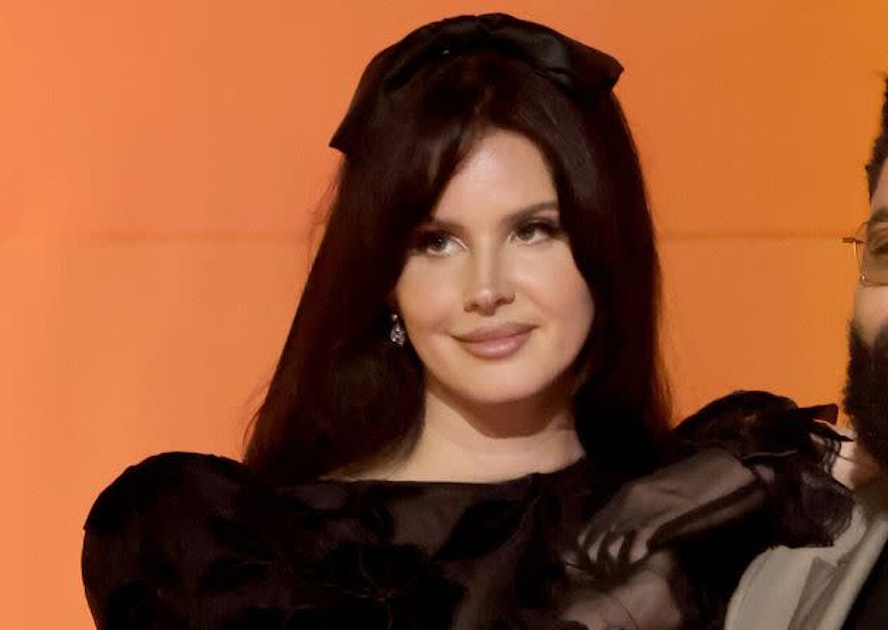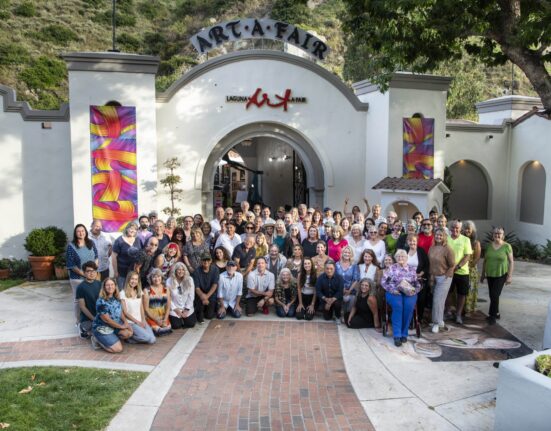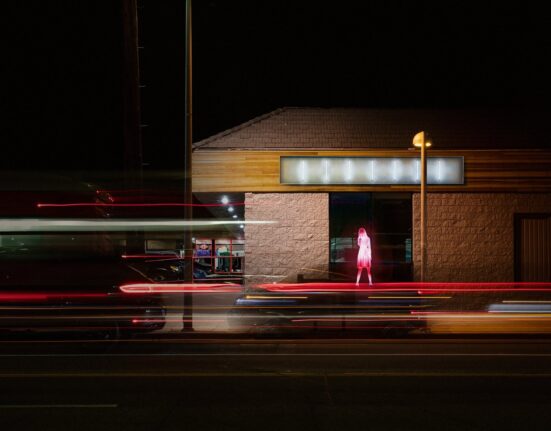When Taylor Swift won her fourth Best Album Grammy for Midnights, she dragged collaborator Lana Del Rey onstage with her, and gushed about the latter’s impact: “Lana Del Rey… I think so many female artists would not be where they are and would not have the inspiration they have if it weren’t for the work that she’s done. I think she is a legacy artist, a legend and in her prime right now. I am so lucky to know you and to be your friend.”
It’s somewhat ironic that Swift, with 14 Grammy wins, was praising someone who has zero, but it’s probably a greater commentary on how weird the Grammys have always been, especially when it comes to honoring innovation. It’s easy to look at a correlation between record sales and a Grammy win, particularly with someone like Swift. Her Best Album award should be regarded as gratitude from an ailing industry. However, as an artist, no one’s accusing Swift of reinventing the wheel. She maintains a status quo of well-crafted pop music with a unique gift for building a personal connection with listeners.
When music historians look back on pop music trends of the 2010s, the story will be centered on the emergence of sad girl music, and Lana Del Rey will be seen as the cornerstone. At the end of the 2000s, pop music had become very dance-oriented in what was already a painfully shallow era. In the shadow of the 2008 economic crisis, the surge of dance music is reminiscent of the Depression- era Busby Berkeley musicals, where moments of escapism were desperately needed. With Del Rey’s 2011 debut album, Born to Die, a recalibration of both female artists and music fans was underway.
Del Rey’s emergence was greeted with a degree of suspicion, initially regarded as an industry plant due to her affluent background. As her output grew, it became clear that she was her own artist, a literate songwriter with a distinct take on the world around her. One aspect of controversy that dogged her for years was what was seen as an antiquated view of romance, particularly one that idealized toxic relationships. As more fans described her as an empowering listen, that narrative began to shift to one of relatability.
Many could relate to a song like “Video Games,” where a girl’s desperately in love with a guy who takes her for granted, while understanding that music can exist as a release valve of one’s most intimate emotions.
In addition to her distinctive lyrics, the overall production sound of Del Rey’s music was unlike anything else at the time. Largely helmed by Rick Nowels, who previously produced Stevie Nicks and Belinda Carlisle, the sound was slower than anything on radio at the time, swirling mercurial moods, at once familiar and alien. Borrowing elements of Smokey Robinson’s Quiet Storm, Phil Spector’s Wall of Sound, Enya’s new age atmospherics, Angelo Badalamenti’s obtuse chord progressions, accented with Duane Eddy-inspired guitar licks, Nowels and Del Rey crafted instant nostalgia for a world much of her audience would’ve been too young to remember. Many of her early music videos had the look of Super-8 home movies, of Southern California from an Eve Babitz story. With romantic tales of woe delivered by Del Rey’s own uniquely sardonic vocals, the die was cast for a new era.
The impact of Del Rey’s work was a slow burn, and she initially appeared to have the makings of a cult artist. By 2013, with the release of Lorde’s “Royals” and Beyonce’s self-titled album, the tide in mainstream pop started to turn. As both a solo artist and a member of Destiny’s Child, Beyonce was no stranger to anthems of female empowerment, but the more introspective lyrics of songs like “Pretty Hurts” and “Flawless” yielded her most successful album to date. Lorde’s critique of conspicuous consumption was cathartic for music fans; especially stinging was the comparison of people struggling to afford public transportation while pop stars wax poetic about their luxuries.
Taylor Swift occupied an interesting place during this time, while she was making the transition from country to pop, she was also maturing into a more ambitious lyricist. In hindsight, it’s easy to see Del Rey’s influence on Swift’s budding self-deprecation in a song like “Blank Space,” as well as a common frustration at less-than-adequate romantic prospects. The popularity of dance-floor titans like Lady Gaga and Katy Perry would soon wane.
While it might still be too soon to gauge the Trump administration’s cultural impact, the growing presence of young women, as both fans and artists, is undeniable. In particular, the patience for thoughtless artists producing mindless fluff was largely gone. By decade’s end, newer artists like Billie Eilish and Olivia Rodrigo emerged with Del Rey’s and Swift’s fingerprints all over their work. At the same time, there was a new surge of female indie artists into the mainstream in a more substantial way than the Lilith Fair promised in the 1990s.
The subtle music trend shifts of the 2010s are somewhat reminiscent of the odd detours of the 1990s. While the main story is that the kids got bored with the pomposity of hair metal and craved the authenticity of Nirvana, there’s more to it. A generation of girls were fed up with only seeing female representation on MTV as trophy babes, and out of that Riot Grrl and Lilith Fair emerged to give women musicians more creative presence. But by the end of the 90s, a new generation of Mouseketeers arrived covered in body glitter in a prolonged attempt to out-naked each other because they clearly weren’t paid to think. It might be overly optimistic to think music trends won’t resume the more sexist circumstances that led to Britney Spears’ implosion. But seeing how Taylor Swift won the war against her detractors, and how Spears’ own fans emerged as her rescuers, there appears to be more respect of artists’ humanity.
The Grammys have received a lot of criticism for failing to honor Beyonce’s self-titled album and 2015’s Lemonade with Best Album wins. As streaming has made music more singles-oriented, those albums were among the few to become cultural events in their own right. Lana Del Rey is on track to acquire the most nominations without ever winning any Grammys. As I said, I suspect Swift remains an award show darling as long as she’s a walking license to print money, but there’s a point where it’s just ridiculous. While the credibility of entertainment awards is questionable, there are plenty of artists deserving of the sales and publicity boosts they can provide. Del Rey is likely to be a recipient of something like Steely Dan’s win, where they were finally recognized decades after it mattered.







